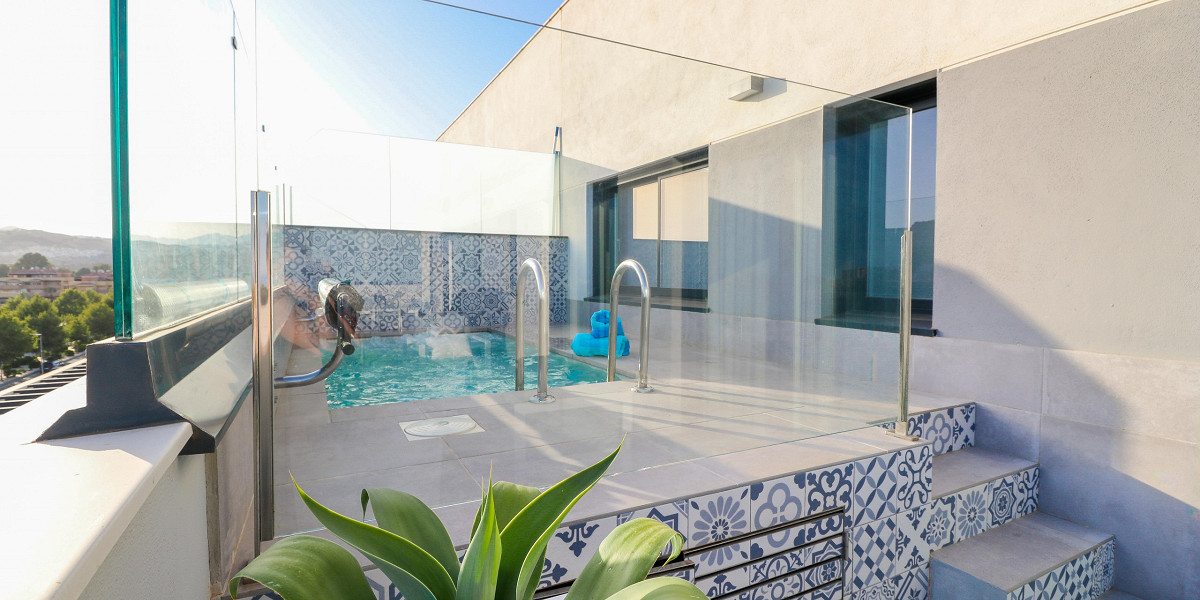There is no specific law prohibiting portable pools on private terraces. Installation is legal as long as it does not compromise the structure of the building.
Neighborhood Association:
- For removable pools, authorization is not usually required.
- If the installation involves structural work or reinforcements, approval by the neighborhood association is mandatory.
- The owner is responsible for any damage caused (leaks, moisture, etc.).
Municipal regulations:
- Portable pools generally do not require a license.
- Fixed or built-in pools do require specific municipal permits.
- It is always advisable to check local regulations before starting the installation.
Technical requirements
1. Terrace load capacity:
- The Technical Building Code (CTE) establishes a load capacity of 200–250 kg/m².
- This is equivalent to approximately 20–25 cm of water in the pool.
- The total weight must include furniture, decorative elements, and people.
2. Professional Assessment:
- It is advisable to consult a technical architect, especially in older or unreinforced buildings.
- Do not exceed 20 cm of water unless the structure has been reinforced.
3. Risks and Liabilities
a) Excessive Weight:
- Exceeding the load-bearing capacity can cause:
- Cracks in ceilings and walls.
- Water leaks into lower dwellings.
- Partial subsidence and, in extreme cases, structural collapse.
b) Legal Liability:
- The owner assumes responsibility for any damage caused.
- Home insurance may not cover incidents resulting from negligence.
4. Practical Recommendations
- Always consult with the city council and the homeowners' association before installing a pool.
- Check the load-bearing capacity of the terrace and, if in doubt, request a technical assessment.
- Prioritize structural safety over the size and depth of the pool.
- Maintain transparent communication with neighbors to avoid future conflicts.
Installing a pool on a terrace is feasible, provided that technical and legal limits are respected. Planning, regulatory compliance, and professional consultation are key to avoiding unnecessary risks and liabilities.
Should I reinforce the terrace to install a pool?
Before considering installing a terrace pool, it is essential to review the original home design and structural plans. If this documentation is unavailable, it is essential to have a technical evaluation by a specialized architect. Remember: if the pool exceeds 250 kg/m², it is advisable to reduce the water level (approximately 20–30 cm) or reinforce the structure before proceeding with the installation.
To ensure safety and regulatory compliance, keep in mind:
- Technical study: A professional must evaluate the load-bearing capacity of the slab. If the structure is insufficient, it will need to be reinforced.
- Structural reinforcement: This may require the addition of metal beams, additional pillars, or shoring systems.
- Waterproofing and insulation: Install waterproof tarps under the pool and use non-slip flooring to prevent leaks and accidents.
- Water, drainage, and electrical installations: It is essential to have a water inlet, drainage outlet, and grounded electrical connection for the treatment plant.
- Permits and installation: For fixed or reinforced installations, apply for the corresponding planning permit. The use of cranes to lift the pool may require additional coordination with the city council.
- Specialized company: Hiring professionals with experience in rooftop pools ensures proper execution and minimizes risks.
- New construction: If you are building a home, design the structure to support the weight of the pool from the start. This reduces costs and simplifies the process.
Installing a rooftop pool can significantly improve the quality of life, but it requires planning, professional advice, and regulatory compliance. Always prioritize safety and the structure to avoid major problems and protect your investment.

